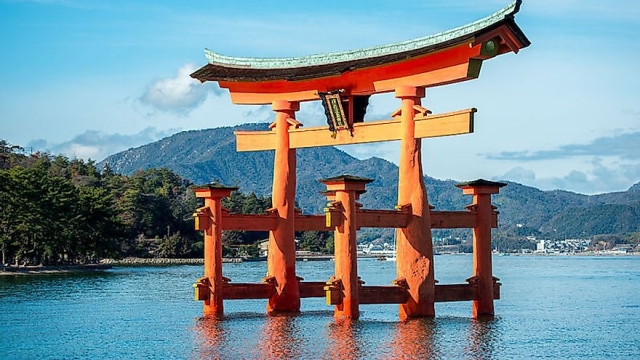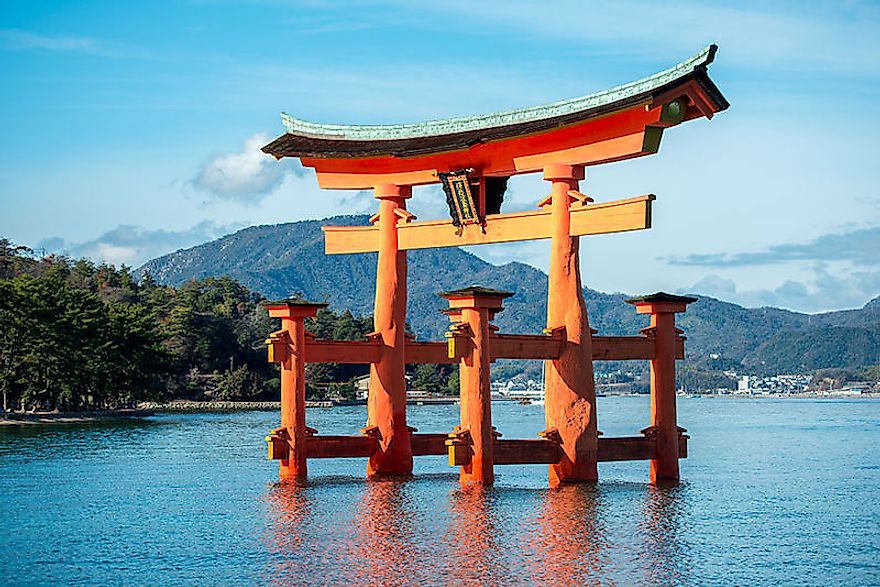
Whispers of the Kami: Exploring the Enchantment of Shinto Shrines in Japan

Nestled within the serene landscapes of Japan, Shinto shrines stand as timeless monuments to the country’s spiritual heritage. These sacred spaces are more than just architectural marvels; they encapsulate the essence of Shinto, the indigenous faith of Japan, which emphasizes the reverence of kami, the divine spirits that inhabit nature. Each shrine tells its own story, woven into the rich tapestry of Japan’s cultural history, inviting visitors to experience a connection to something greater than themselves.
As you wander through the torii gates, the vibrant red structures marking the entrances to these sanctuaries, you are greeted by a profound sense of tranquility. The sounds of rustling leaves and gentle streams provide a soothing backdrop, allowing for introspection and reflection. Shinto shrines in Japan offer a unique glimpse into a world where spirituality and nature intertwine, beckoning both locals and travelers to explore their captivating enchantment.
Historical Significance of Shinto Shrines
Shinto shrines in Japan serve as vital symbols of the country’s spiritual heritage and cultural identity. Dating back to ancient times, these shrines have been integral to Japanese society, embodying the beliefs and practices surrounding the kami, or divine spirits. The establishment of these sacred spaces marked the beginning of an organized religious practice that intertwined with various aspects of daily life, politics, and tradition. The architecture and rituals associated with shrines reflect the evolution of Japanese culture throughout history, making them important historical landmarks.
During the Heian period, Shinto shrines underwent significant development, with the establishment of notable shrines such as Ise Jingu and Fushimi Inari Taisha. These sites became centers for pilgrimage, influencing not just religious practices but also artistic expressions and community gatherings. The shrines were often associated with powerful clans and the imperial family, reinforcing their importance in both religious and political spheres. The interactions between Shinto and Buddhism during this era further shaped the cultural landscape, leading to a unique blend of spiritual practices that enriched Japanese heritage.
In modern times, shinto shrines in Japan continue to play a crucial role in preserving traditional values and fostering a sense of community. They are places where people come to celebrate life events, such as weddings and festivals, while also seeking spiritual solace and connection with the kami. The ongoing maintenance and reverence for these shrines highlight their lasting significance as cultural treasures. Furthermore, they attract both domestic and international visitors, offering a glimpse into the rich tapestry of Japan’s spiritual past, thus ensuring that the legacy of Shinto shrines remains vibrant and relevant in contemporary society.
Architectural Wonders
Shinto shrines in Japan are a stunning blend of natural beauty and intricate craftsmanship. Often nestled in serene settings, these structures are designed to harmonize with their surroundings. The use of natural materials like wood and stone reflects a deep respect for nature, which is central to Shinto beliefs. The torii gates, iconic symbols of Shinto, serve as gateways separating the sacred from the profane, marking the entrance to these spiritual spaces.
Get The Best Price
The architectural style of Shinto shrines varies significantly across regions, showcasing the diversity of Japan’s culture and history. From the elegant simplicity of the Ise Grand Shrine to the ornate carvings of the Toshogu Shrine, each structure tells a unique story. The use of thatched roofs and raised floors not only adds to the aesthetic appeal but also serves practical purposes, protecting the shrines from the elements and pests. Each shrine’s design is steeped in symbolism, reflecting the beliefs and values of the communities they serve.
Visiting Shinto shrines offers an opportunity to appreciate these architectural wonders up close. The meticulous attention to detail, from the intricate woodwork to the serene gardens, invites contemplation and connection with the divine. Many shrines also host seasonal festivals that highlight their unique architecture while celebrating traditions that have endured for centuries. Exploring these spaces provides insight into Japan’s spiritual heritage and the artistry that brings the whispers of the kami to life.
Rituals and Festivals
The rituals and festivals associated with Shinto shrines in Japan are vibrant celebrations that reflect the deep connection between the community and the kami, or spirits. These events often mark seasonal changes, agricultural cycles, and important life milestones. One of the most significant festivals is the Takayama Matsuri held in Takayama, where ornate floats are paraded through the streets, showcasing traditional art and craftsmanship. Such festivals not only honor the kami but also strengthen the bonds within the local community.
Another important aspect of Shinto rituals is the practice of various purification and offerings. Visitors to shrines often engage in the practice of ritual purification known as temizu, where they wash their hands and mouth at a water basin to cleanse themselves before approaching the kami. Offerings of rice, sake, and other food items are made to express gratitude and seek blessings. These acts serve to create a sense of spirituality and reverence, drawing people closer to the ethereal presence of the kami.
Seasonal festivals, or matsuri, frequently feature traditional music, dance, and theatrical performances, bringing together individuals of all ages. For example, the Gion Matsuri in Kyoto is a month-long celebration filled with processions, food stalls, and elaborate performances that attract both locals and tourists alike. Such events encapsulate the rich heritage of Japan and provide a unique opportunity for people to engage with their cultural roots while fostering community spirit and continuity of traditions.
Spiritual Connection with Nature
Shinto shrines in Japan embody a profound relationship between spirituality and the natural world. Central to Shinto beliefs is the concept that kami, or divine spirits, inhabit natural elements such as trees, rocks, rivers, and mountains. This belief encourages a deep reverence for nature, and many shrines are located in picturesque settings that harmonize with their surroundings. The serene landscapes that encompass these shrines invite visitors to reflect on the beauty of nature, fostering a sense of peace and connection that is integral to the Shinto experience.
Visitors to Shinto shrines often notice the careful preservation of trees and plants within shrine grounds. Sacred trees, known as gohei, are often adorned with white paper streamers, representing the presence of kami. These natural features are not only aesthetic; they serve as a reminder of the interconnectedness of life and the importance of respecting the environment. Walking through a shrine allows one to embrace the tranquility of nature, creating an atmosphere conducive to spiritual reflection and gratitude.
The rituals and practices at Shinto shrines further emphasize this connection with nature. Offerings of rice, sake, and seasonal fruits are presented to kami, symbolizing harmony with the earth and acknowledgment of its bounty. Festivals often celebrate specific natural phenomena, such as cherry blossom viewings or harvests, reflecting the cycles of nature and the gratitude of the community. By integrating natural elements into their spiritual practices, Shinto shrines reinforce the belief that nature is sacred and fosters a continuous dialogue between the divine and the earthly.



